The Relative Risk Ratio and Odds Ratio are both used to measure the medical effect of a treatment or variable to which people are exposed The effect could be beneficial (from a therapy) or harmful (from a hazard) Risk is the number of those having the outcome of interest (death, infection, illness, etc) divided by the total number exposed to Hazard Ratios vs Risk Ratios (orSometimes, we see the log odds ratio instead of the odds ratio The log OR comparing women to men is log(144) = 036 The log OR comparing men to women is log(069) = 036 log OR > 0 increased risk log OR = 0 no difference in risk log OR < 0 decreased risk Odds Ratio 0 5 10 15 More on the Odds Ratio Log Odds Ratio4 2 0 2 4Odds ratio vs Relative Risk/Hazard Ratio I have a background in physics with a few courses in statistics, but I still have a hard time intuitively understanding OR I get RR as it just is a ratio of probabilities, and I look at HR as RR with a time component95% confidence interval, ) and incident ASCV events (hazard ratio, 187Peto's method

Measures Of Disease Association Ppt Download
Hazard ratio vs relative risk vs odds ratio
Hazard ratio vs relative risk vs odds ratio-Relative risks, odds ratios and hazard ratios?Where RR is the relative risk, OR is the odds ratio, and p is the control event rate, which leads to the following OR = ((1 p) * RR) / (1 RR * p) Thus, for instance, a RR of with a p of 01 would lead to an OR of 225, whereas if p increases to 02 it would lead to an OR of 267
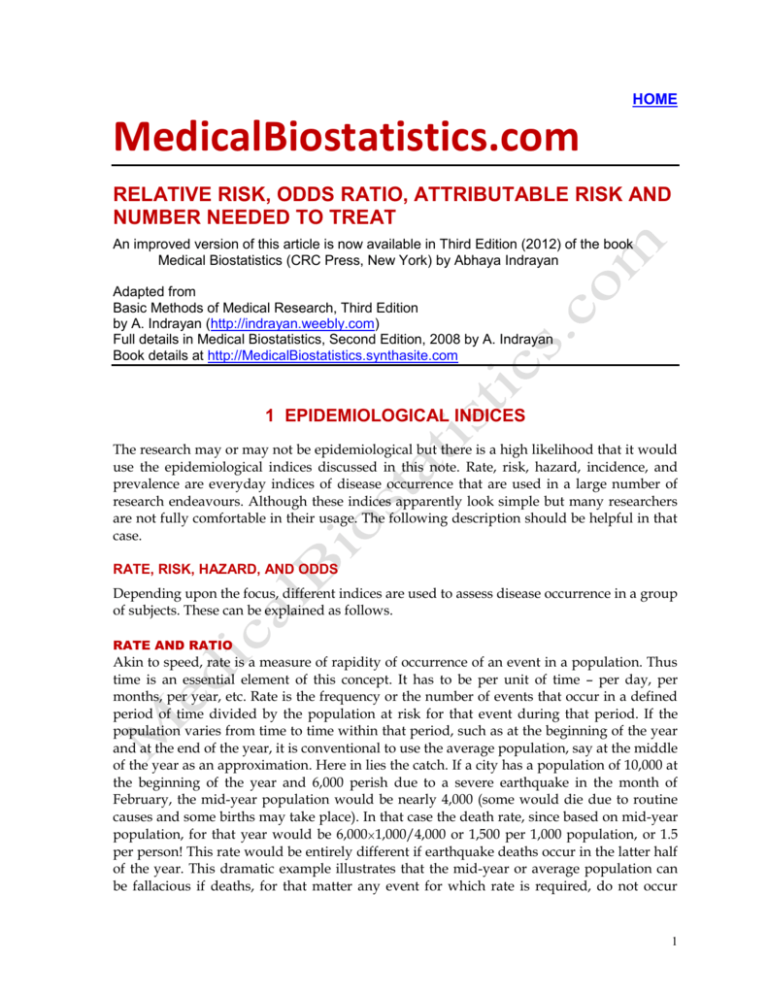



Relative Risk Odds Ratio Attributable Risk And
I understand that odds ratio is the ratio is the odds of two groups (ie positive outcomes/negative outcomes), where as relative risk is the ratio of risk of two groups (ie positive outcomes/all outcomes)In our example above, p wine and p no_wine were 0009 and 0012 respectively, so the odds ratio was a good approximation of the relative risk OR = 0752 and RR = 075 If the risks were 08 and 09, the odds ratio and relative risk will be 2 very different numbers OR = 044 and RR = 0 Relative risk vs Odds ratio Risk ratios, odds ratios, and hazard ratios are three ubiquitous statistical measures in clinical research, yet are often misused or misunderstood in their interpretation of a study's results 1 A 01 paper looking at the use of odds ratios in obstetrics and gynecology research reported 26% of studies (N = 151) misinterpreted odds ratios as risk ratios 2, while a
Risk ratios, odds ratios, and hazard ratios are three ubiquitous statistical measures in clinical research, yet are often misused or misunderstood in their interpretation of a study's results 1 A 01 paper looking at the use of odds ratios in obstetrics and gynecology research reported 26% of studies (N = 151) misinterpreted odds ratios as risk ratios 2, while aOdds ratios (OR) are commonly reported in the medical literature as the measure of association between exposure and outcome However, it is relative risk that people more intuitively understand as a measure of association Relative risk can be directly determined in a cohort study by calculating a risk ratio (RR) If the risk ratio is 1 (or close to 1), it suggests no difference or little difference in risk (incidence in each group is the same) A risk ratio > 1 suggests an increased risk of that outcome in the exposed group A risk ratio < 1 suggests a reduced risk
Relative Risk and Odds Ratio for the obese 3) Overall, you can see that decreasing the baseline incidence will decrease the odds ratio (300 in those who are nonobese versus 129 in those who are obese) Obviously, these results run counter to expected results, putting the onus on the researcher to justify them Similarly, you should find The odds ratio will estimate the average change in odds (the average odds ratio) among exposed individuals only when all individual odds ratios are equal and all individual outcome risks without exposure are equal 1;Hazard ratios differ from relative risk (or risk ratio not relative risk rations) in that risk ratios are cumulative over an entire study (you must use a defined endpoint which is preselected




Odds Ratio Article



Studying Studies Part I Relative Risk Vs Absolute Risk Peter Attia
The relative risk (also known as risk ratio RR) is the ratio of risk of an event in one group (eg, exposed group) versus the risk of the event in the other group (eg, nonexposed group) The odds ratio (OR) is the ratio of odds of an event in one group versus the odds of the event in the other group The relative risk tells us the ratio of the probability of an event occurring in a treatment group to the probability of an event occurring in a control group It is calculated as Relative risk = A/(AB) / C/(CD) In short, here's the difference An odds ratio is a ratio of two odds Relative risk is a ratio of two probabilitiesRelative Risk and Odds Ratio Calculator This Relative Risk and Odds Ratio calculator allows you to determine the comparative risk of the occurrence of a significant event (or outcome) for two groups For example, suppose the members of one group each eat a kilo of cheese every day, and the members of another group eat no cheese, and you have




Odds Ratio Hazard Ratio And Relative Risk Janez Stare Semantic Scholar




Definition And Calculation Of Odds Ratio Relative Risk Stomp On Step1
Hazard ratios differ from relative risks (RRs) and odds ratios (ORs) in that RRs and ORs are cumulative over an entire study, using a defined endpoint, while HRs represent instantaneous risk over the study time period, or some subset thereof Hazard ratios suffer somewhat less from selection bias with respect to the endpoints chosen and can indicate risks that happen before theThe risk ratio (or relative risk) is the ratio of the risk of an event in the two groups, whereas the odds ratio is the ratio of the odds of an event (see Box 92a ) For both measures a value of 1 indicates that the estimated effects are the same for both interventions Neither the risk ratio nor the odds ratio can be calculated for a study Note that the relative risk and the incidence rate ratio were different, 058 versus 042, with the timedependent relative risk suggesting a greater benefit from intervention than the overall relative risk, and which is also fairly close to the estimated hazard ratio of 039 (row j)




Pdf What S The Risk Differentiating Risk Ratios Odds Ratios And Hazard Ratios Semantic Scholar



How To Read A Forest Plot Cochrane Uk
Hazard ratio The hazard ratio in survival analysis is the effect of an exploratory?A value lower than 100 indicates decreased risk The 95% confidence intervals and statistical Hazard Ratios vs Risk Ratios (or Relative Risk) Hazard ratio is frequently interpreted as risk ratio (or relative risk), but they are not technically the same However, if that helps you to understand hazard ratio then it is OK But keep in mind HR is not RR




Graphical Presentation Of Relative Measures Of Association The Lancet




A Beginner S Guide To Interpreting Odds Ratios Confidence Intervals And P Values Students 4 Best Evidence
In other words, the relative reduction in risk of death is always less than the hazard ratio implies It is also a decreasing function of the time point at which it is assessed For instance, in the example in Figure 1 , a 40% hazard reduction implies risk reductions of 25% and only 14% in the 1year and 2year mortality rates, respectivelyOdds are the ratio of the probability of an ev ent occurring in a group, divided by the probability of that ev ent not occurring odds = π 1 − π For example, if probability of death in aThis implausible scenario is shown in Table 5, where collapsed counts for low (or high) risk subjects only produce a 2 × 2




Cureus What S The Risk Differentiating Risk Ratios Odds Ratios And Hazard Ratios




Cph Exam Review Epidemiology Ppt Download
In a control group The odds ratio (OR) is the odds of an event in an experimental group relative to that in a control group An RR or OR of 100 indicates that the risk is comparable in the two groups A value greater than 100 indicates increased risk;Essentially, the odds ratio estimate the _______ in these types of studies Risk ratio What is the definition of odds ratio? The odds ratio will be greater than the relative risk if the relative risk is greater than one and less than the relative risk otherwise In the example above, if the adjusted odds ratio were interpreted as a relative risk, it would suggest that the risk of antibiotic associated diarrhoea is reduced by 75% for the intervention relative to the




Measures Of Effect Relative Risks Odds Ratios Risk Difference And Number Needed To Treat Kidney International




Odds Ratios And Risk Ratios Youtube
After converting the odds ratio to a risk ratio, the actual risk is 14 (mortality is 14 times more likely in patients with ICU delirium compared to those without ICU delirium) Because the incidence rate in the nondelirium group is high, the odds ratio exaggerates the true risk demonstrated inThe risk difference of A relative to B is 001, the risk ratio is 101 Or one could view the risk ratio and the odds ratio as approximations to the hazard ratio or rate ratio Rates and hazards can exceed 1, unlike risks , so there's no constraint on the hazard ratio , unlike the risk ratioOdds ratio vs Relative Risk/Hazard Ratio I have a background in physics with a few courses in statistics, but I still have a hard time intuitively understanding OR I get RR as it just is a ratio of probabilities, and I look at HR as RR with a time component




Relative Risk Odds Ratio Attributable Risk And
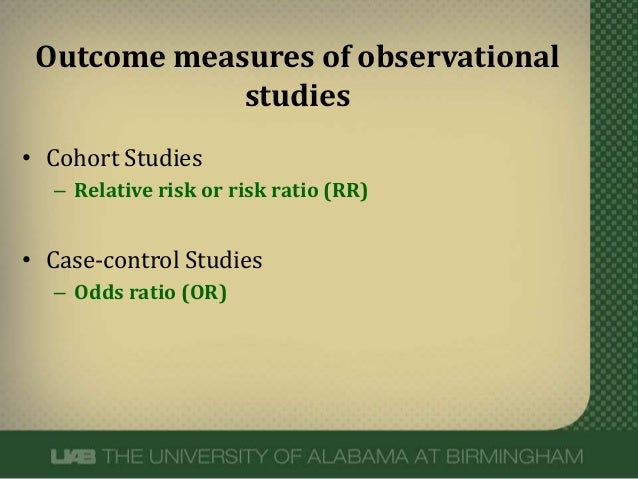



What Does An Odds Ratio Or Relative Risk Mean
Percent increase = (Risk Ratio lower bound – 1) x 100 Percent decrease = (1 – Risk Ratio upper bound) x 100 It's worth stating again when comparing two proportions close to 1 or 0, the risk ratio is usually a better summary than the raw difference Odds Ratios We now turn to odds ratios as yet another way to summarize a 2 x 2 tableThe method of presenting the results of clinical studies can affect their interpretation by clinicians2 and nonclinicians alike3,4 Therefore, it is important to understand the different ways in which results can be presented Absolute risk refers to the simple event rate in a group of people whoDefinition of risk ratio A risk ratio (RR), also called relative risk, compares the risk of a health event (disease, injury, risk factor, or death) among one group with the risk among another group It does so by dividing the risk (incidence proportion, attack rate) in group 1 by the risk (incidence proportion, attack rate) in group 2




How To Be Awesome At Biostatistics And Literature Evaluation Part Ii Tl Dr Pharmacy




Measures Of Disease Association Ppt Download
Risk ratios, odds ratios, and hazard ratios are three common, but often misused, statistical measures in clinical research In this paper, the authors dissect what each of these terms define, and provide examples from the medical literature toOdds that a person with an adverse outcome was at risk (or exposed)/ Odds that a person without an adverse outcome was at risk (or exposed) Odds group 1/odds group 2The Relative Risk Ratio and Odds Ratio are both used to measure the medical effect of a treatment or variable to which people are exposed The effect could be beneficial (from a therapy) or harmful (from a hazard) Risk is the number of those having the outcome of interest (death, infection, illness, etc) divided by the total number exposed to




How To Interpret And Use A Relative Risk And An Odds Ratio Youtube



Epidemiology Stepwards
Could someone explain why odds ratios are used in case control studies where as relative risk is used in RCT and cohort studies? The hazard ratio is the ratio of these two expected hazards h 0 (t)exp (b 1a)/ h 0 (t)exp (b 1b) = exp(b 1(ab)) which does not depend on time, t Thus the hazard is proportional over time Sometimes the model is expressed differently, relating the relative hazard, which is the ratio of the hazard at time t to the baseline hazard, to the riskVariable on the hazard or risk of an event Hazard ratio can be considered as an estimate of relative risk, which is the risk of an event (or of developing a disease) relative to exposure Relative risk is a ratio of the probability of the event occurring in the exposed group versus the control (nonexposed) group




Hazard Ratio Vs Odds Ratio ただの悪魔の画像




Tutorial About Hazard Ratios Students 4 Best Evidence
About Press Copyright Contact us Creators Advertise Developers Terms Privacy Policy & Safety How works Test new features Press Copyright Contact us CreatorsOdds Ratio, Hazard Ratio and Relative Risk 63 Table 5 Examples of RR and OR for different probabilities ˇ 1 ˇ 2 RR OR4 1 4 62 3 67 5804 01 4 4125 3 Relative Risk (Risk Ratio) • Expresses how many times more (or less) likely an exposed person develops an outcome relative to an unexposed person • Interpretation – RR > 1 Increased risk of outcome – RR = 1 No risk of outcome – RR < 1 Reduced risk of outcome 4




Effect Sizes Basicmedical Key




Applied Interpretation Of Clinical Studies Jim Hoehns Pharm D ps Fccp Ppt Download
About Press Copyright Contact us Creators Advertise Developers Terms Privacy Policy & Safety How works Test new features Press Copyright Contact us Creators Or one could view the risk ratio and the odds ratio as approximations to the hazard ratio or rate ratio Rates and hazards can exceed 1, unlike risks, so there's no constraint on the hazard ratio, unlike the risk ratio Hazard ratios / rate ratios can therefore be constant over the entire range of baseline hazard / background rate Roger The size of your absolute risk reduction depends on what your risk is to begin with Hazard Ratios Doctors sometimes use the term "hazard ratio" to talk about risk A hazard ratio considers your absolute risk to be 1 If something you do or take doesn't change your risk, then the hazard ratio is 1 If something you do or take lowers your risk




Fillable Online Odds Ratio Hazard Ratio And Relative Risk Fax Email Print Pdffiller




Statistics For Gp And The Akt Sept 11
Odds Ratio Vs Relative Risk Bila dua kelompok sedang dalam studi atau observasi, Anda dapat menggunakan dua ukuran untuk menggambarkan kemungkinan komparatif sebuah peristiwa yang terjadiKedua ukuran ini adalah odds ratio dan relative risk Keduanya merupakan dua konsep statistik yang berbeda, meski begitu banyak saling berkaitan satu sama lain Question 23 from the second paper of 08 asked the candidates to define effect size Effect size is a quantitative reflection of the magnitude of a phenomenon;For example, the magnitude of the positive effects of a drug on the study population Measures of effect size include absolute risk, relative risk, odds ratio and numbers needed to treat (NNT)




Reporting The Findings Absolute Vs Relative Risk Center For Health Journalism



2
The basic difference is that the odds ratio is a ratio of two odds (yep, it's that obvious) whereas the relative risk is a ratio of two probabilities (The relative risk is also called the risk ratio) Let's look at an example Relative Risk/Risk Ratio Suppose you have a school that wants to test out a new tutoring program




Statistics For Afp Dr Mohammad A Fallaha Afp




Research Techniques Made Simple Interpreting Measures Of Association In Clinical Research Sciencedirect




Odds Ratio Hazard Ratio And Relative Risk Janez Stare Semantic Scholar




Hazard Ratio Odds Ratio Relative Risk And Increase In Hospital Download Scientific Diagram




Hazard Ratio Vs Odds Ratio ただの悪魔の画像




Hazard Ratio An Overview Sciencedirect Topics




Relative Risk Wikipedia




Cureus What S The Risk Differentiating Risk Ratios Odds Ratios And Hazard Ratios
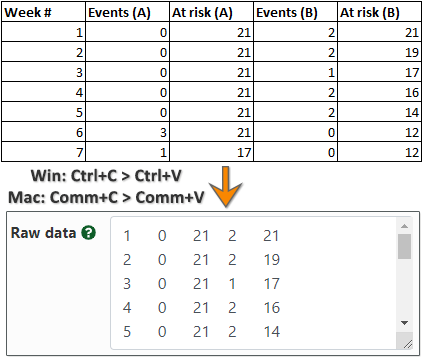



Hazard Ratio Calculator Calculate Hazard Ratio Hr Confidence Intervals P Value




1 Relative Risks Odds Ratios Or Hazard Ratios Of Risk Factors For Download Table



Hazard Ratio




Part 1 Of 3 Interpreting Odds Risk And Rate Ratio Results With 95 Ci Youtube



1



Hazard Ratio Vs Odds Ratio ただの悪魔の画像




Hazard Ratio Relative Risk Or Odds Ratio Of Selected Outcomes For The Download Table




Ppt Measures Of Association Powerpoint Presentation Free Download Id




A Meta Analysis Of Adjusted Hazard Ratios From Observational Studies Of Bilateral Versus Single Internal Thoracic Artery Coronary Artery Bypass Grafting Sciencedirect
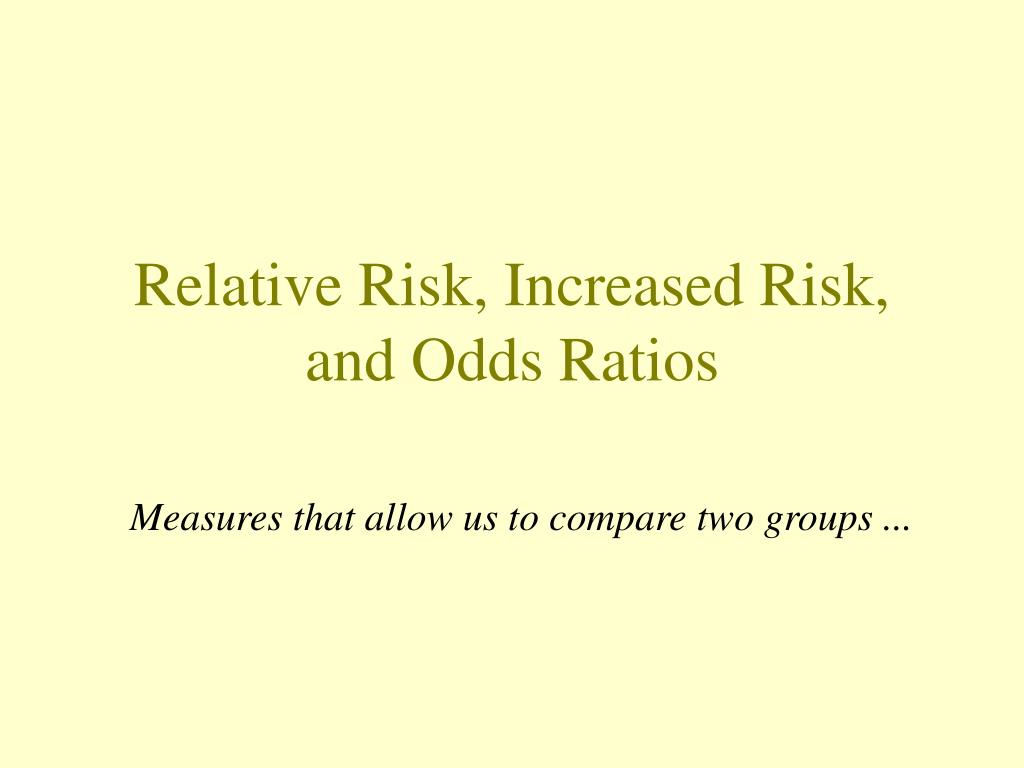



Ppt Relative Risk Increased Risk And Odds Ratios Powerpoint Presentation Id



Plos One Bleeding Risk With Long Term Low Dose Aspirin A Systematic Review Of Observational Studies
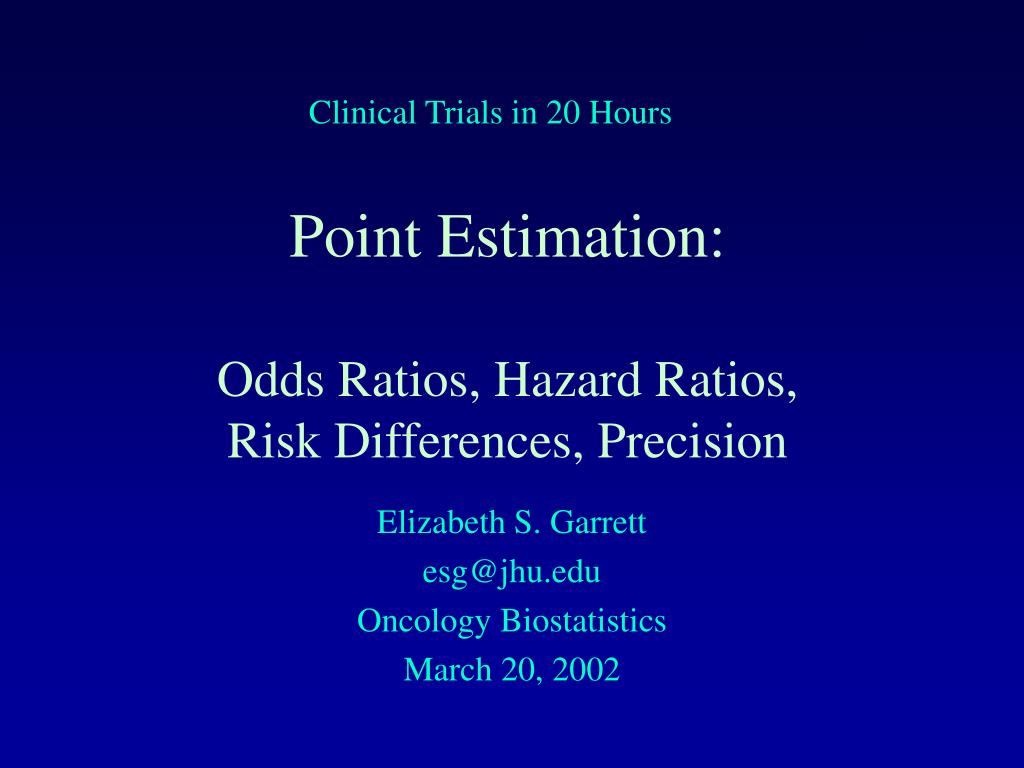



Ppt Point Estimation Odds Ratios Hazard Ratios Risk Differences Precision Powerpoint Presentation Id




Pdf Odds Ratio Hazard Ratio And Relative Risk
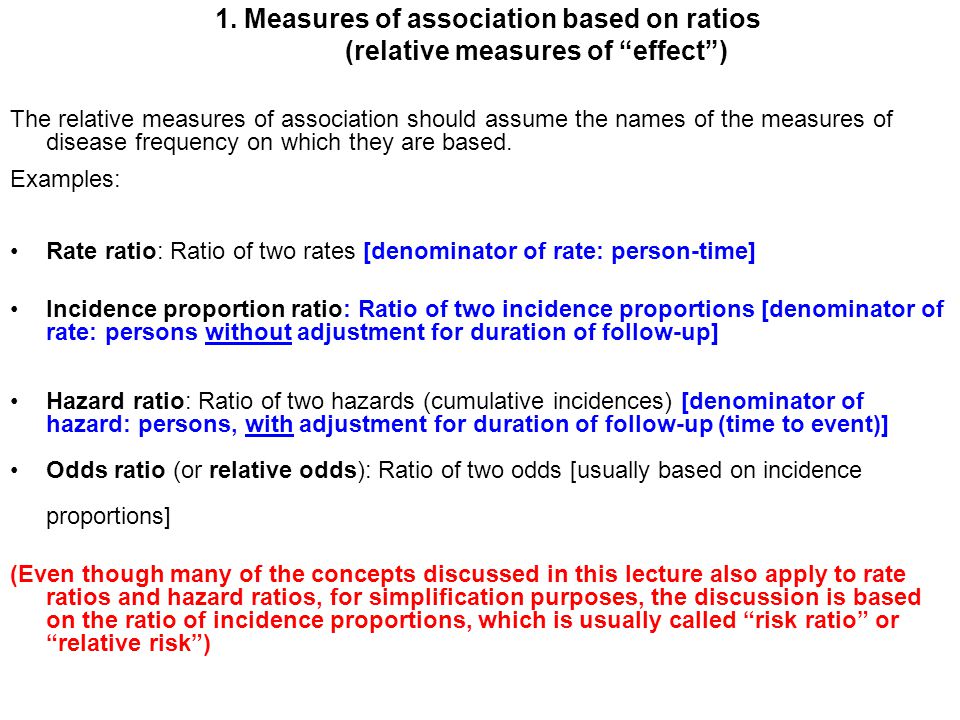



Measures Of Association Ppt Download



Studying Studies Part I Relative Risk Vs Absolute Risk Peter Attia
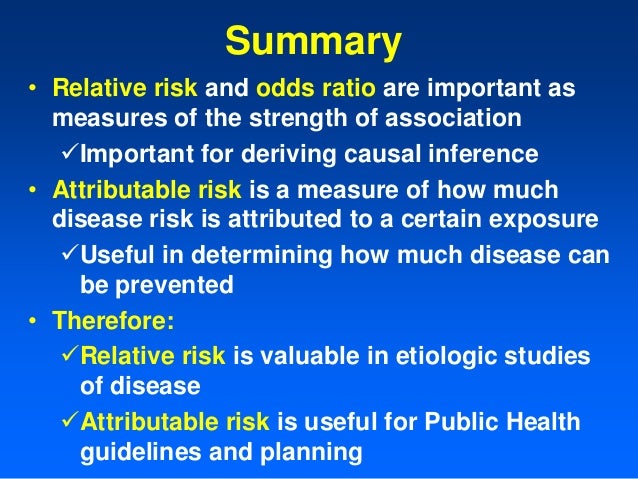



Relative And Atribute Risk




A Beginner S Guide To Interpreting Odds Ratios Confidence Intervals And P Values Students 4 Best Evidence




Odds Ratio Hazard Ratio And Relative Risk Janez Stare Semantic Scholar




What Does An Odds Ratio Or Relative Risk Mean




How To Calculate Odds Ratio And Relative Risk In Excel Statology



Studying Studies Part I Relative Risk Vs Absolute Risk Peter Attia




Kaplanmeier Methods And Parametric Regression Methods Kristin Sainani



2 Which Of The Following Is Not A Measure Of Relative Risk A B C D E Odds Ratio Risk Ratio Hazard Ratio Number Needed To Treat Rate Ratio Course Hero




The Difference Between Relative Risk And Odds Ratios The Analysis Factor
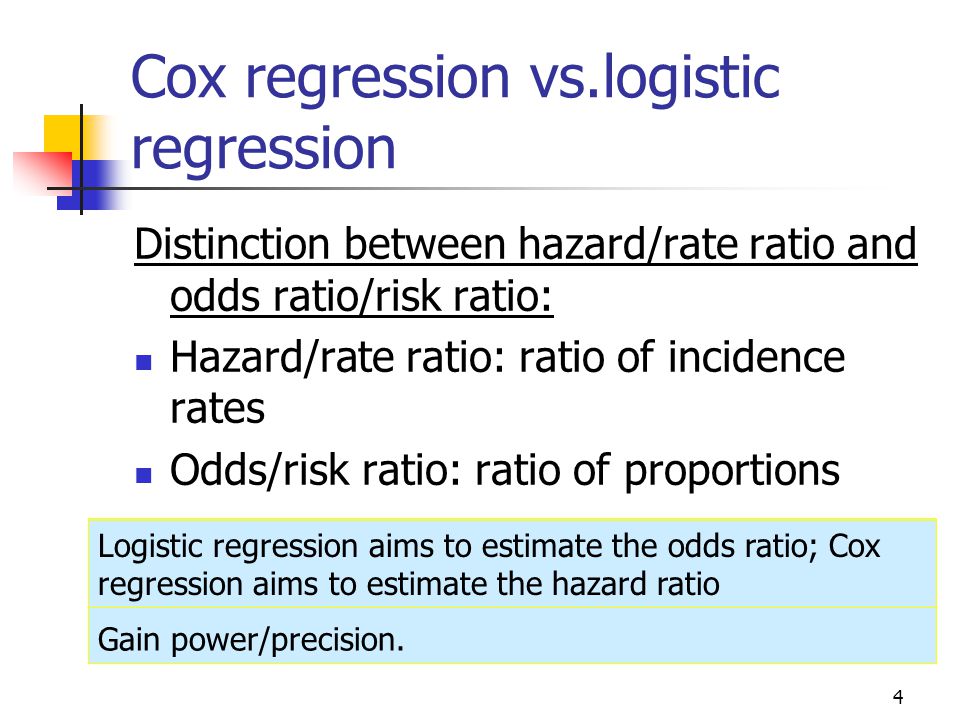



Hazard Ratio Vs Odds Ratio ただの悪魔の画像



2




Tutorial About Hazard Ratios Students 4 Best Evidence




How Did Researchers Calculate The Hazard Ratio Cross Validated




Mixing Of Confounding And Non Collapsibility A Notable Deficiency Of The Odds Ratio American Journal Of Cardiology




Understanding Systematic Reviews And Meta Analysis Archives Of Disease In Childhood




Interpreting Hazard Ratios Youtube




Relative Risk Wikipedia




Pdf When To Use The Odds Ratio Or The Relative Risk Semantic Scholar



How To Explain The Difference Between Hazard Ratio And Relative Risk To A Layman Quora




Chapter 6 Choosing Effect Measures And Computing Estimates Of Effect Cochrane Training




Odds Ratios And Log Odds Ratios Clearly Explained Youtube
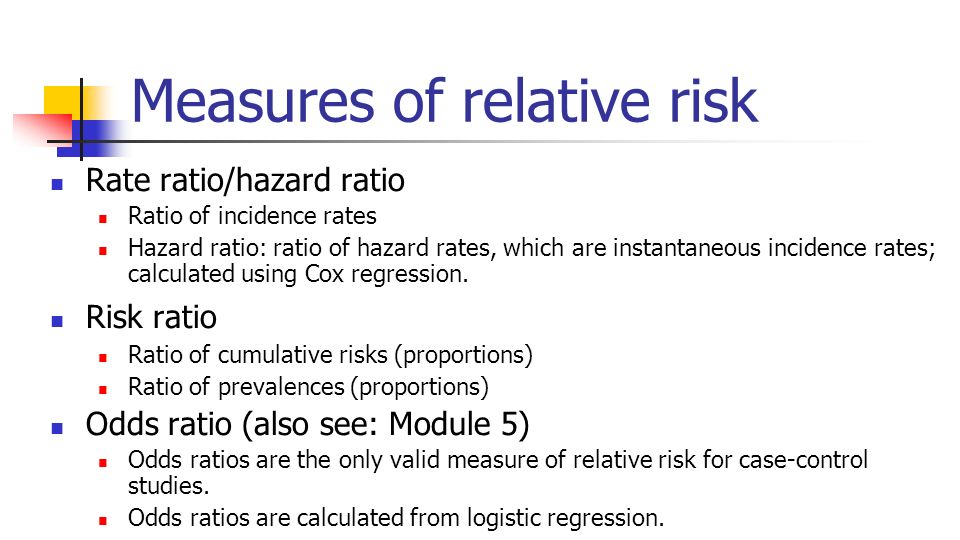



Statistics In Medicine Ppt Download



Definition And Calculation Of Odds Ratio Relative Risk Stomp On Step1
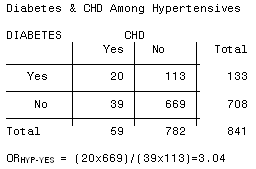



3 5 Bias Confounding And Effect Modification Stat 507




Relative Risk Versus Odds Ratio Usmle Biostatistics 4 Youtube



Odds Ratio



Relative Risk And Odds Ratio Usmle The Journey
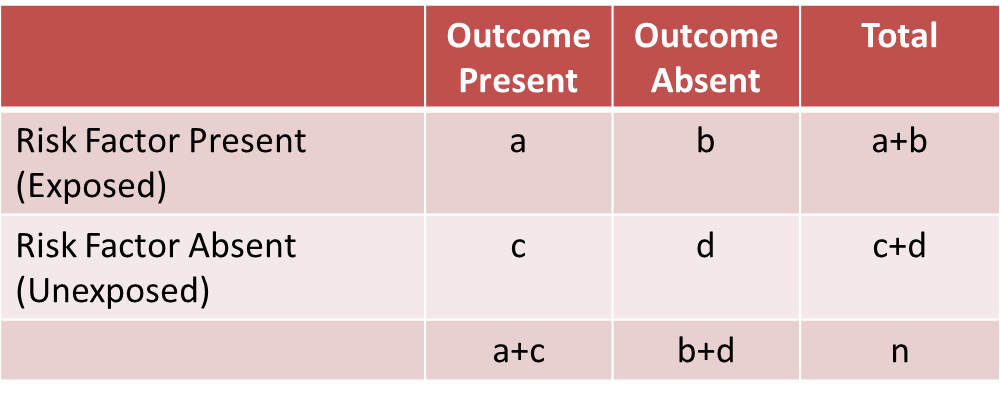



A Stratified Analysis




Hazard Ratio Vs Odds Ratio ただの悪魔の画像



Attributable



What Is The Difference Between The Risk Ratio Rr And The Odds Ratio Or Quora




Pdf Odds Ratio Hazard Ratio And Relative Risk




Hazard Ratio Vs Odds Ratio ただの悪魔の画像
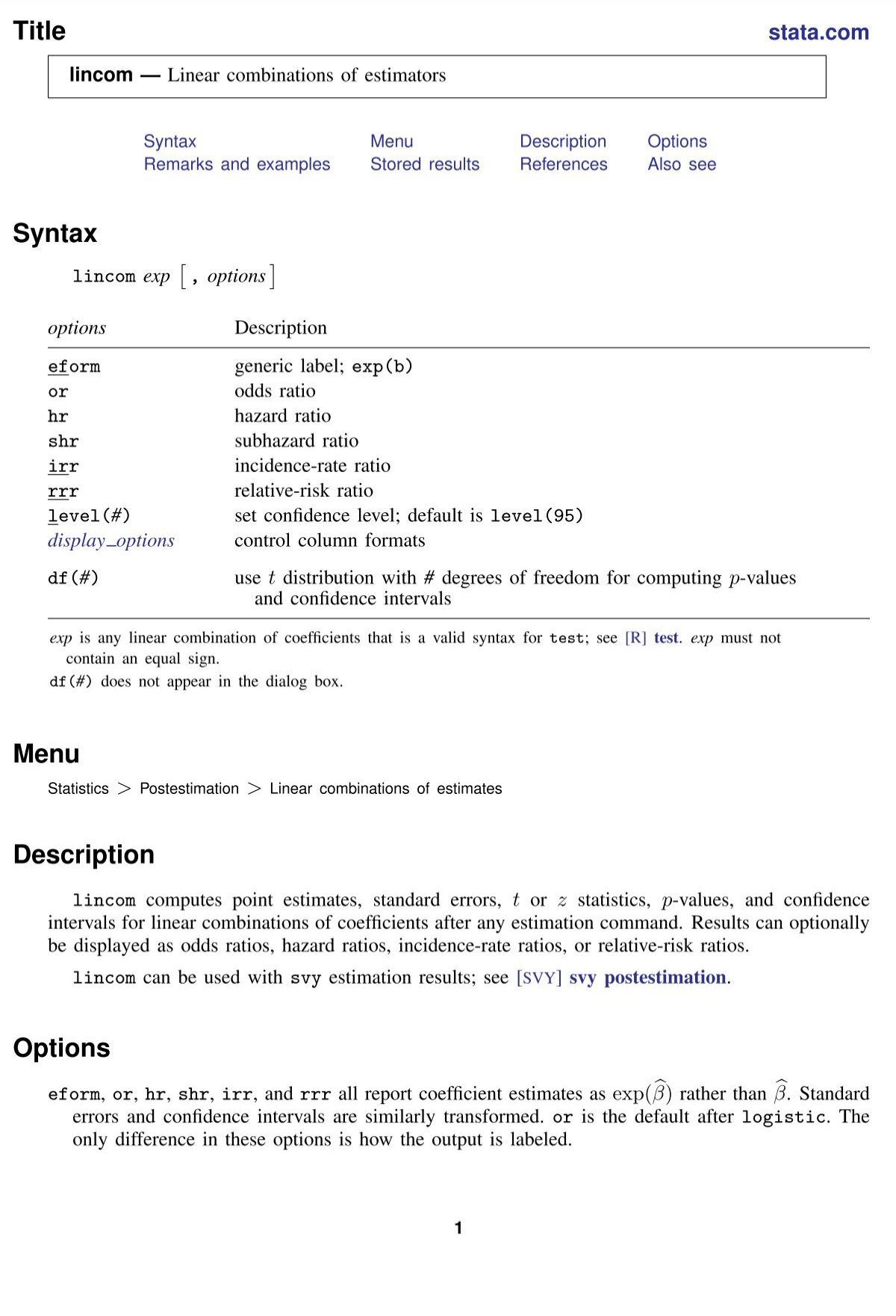



Lincom Stata




Pdf What S The Risk Differentiating Risk Ratios Odds Ratios And Hazard Ratios




Eposters How Big Is A Big Hazard Ratio
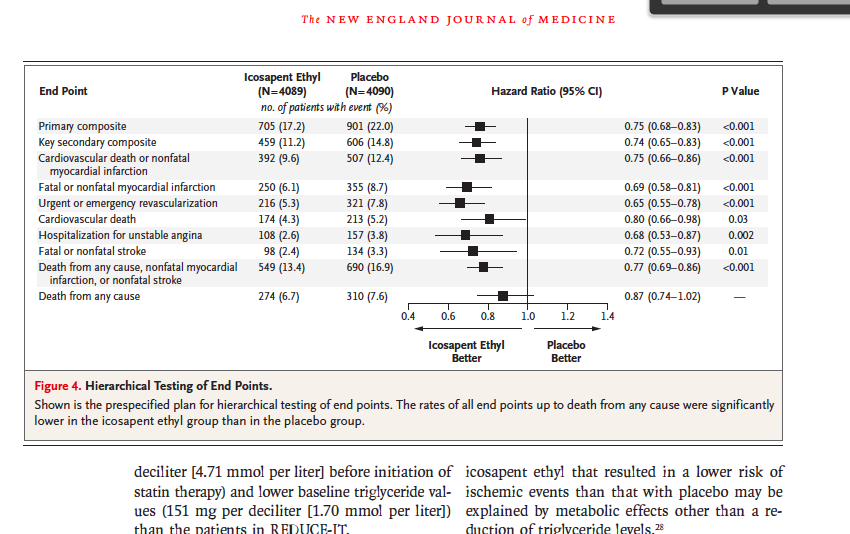



Solved State The Mean Median Hr Hazard Ratio Chegg Com




Measures Of Association Ppt Download



Relative Risk Ratios And Odds Ratios




In A Meta Analysis Of Adjusted Estimates From Observational Studies Can I Pool Or With Hr And Rr Probably Not How Can I Transform Hr To Or




Pdf What S The Risk Differentiating Risk Ratios Odds Ratios And Hazard Ratios Semantic Scholar




Odds Ratio Relative Risk Calculation Definition Probability Odds Youtube



How To Explain The Difference Between Hazard Ratio And Relative Risk To A Layman Quora




Hazard Ratio Wikipedia




Odds Ratio Hazard Ratio And Relative Risk Janez Stare Semantic Scholar




Calculate Relative Risk With 95 Confidence Intervals




Estimated Relative Risk Odds Ratio Or Hazard Ratio With 95 Ci For 4 Download Scientific Diagram



Studying Studies Part I Relative Risk Vs Absolute Risk Peter Attia




Frontiers Odds Ratio Or Prevalence Ratio An Overview Of Reported Statistical Methods And Appropriateness Of Interpretations In Cross Sectional Studies With Dichotomous Outcomes In Veterinary Medicine Veterinary Science




Hazard Ratio Vs Odds Ratio ただの悪魔の画像




Hazard Ratios And Survival Curves Youtube
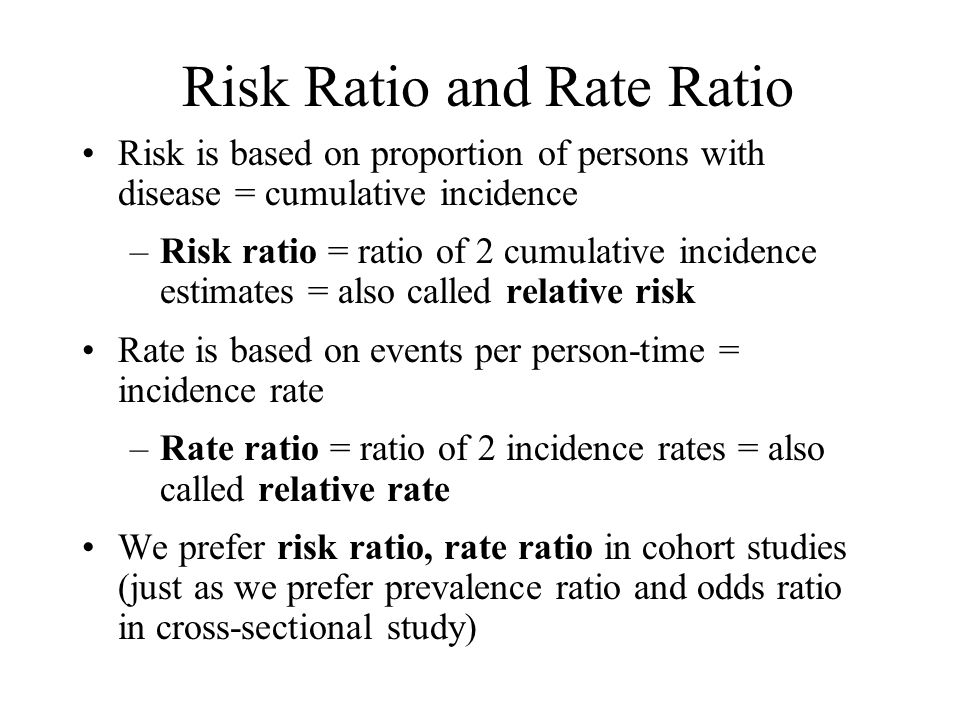



Measures Of Disease Association Ppt Download




Flowchart Of Study Selection Process Hr Hazard Ratios Or Odds Download Scientific Diagram




Relative Risk Odds Ratios Youtube




Relative Risks And Odds Ratios What S The Difference Mdedge Family Medicine


